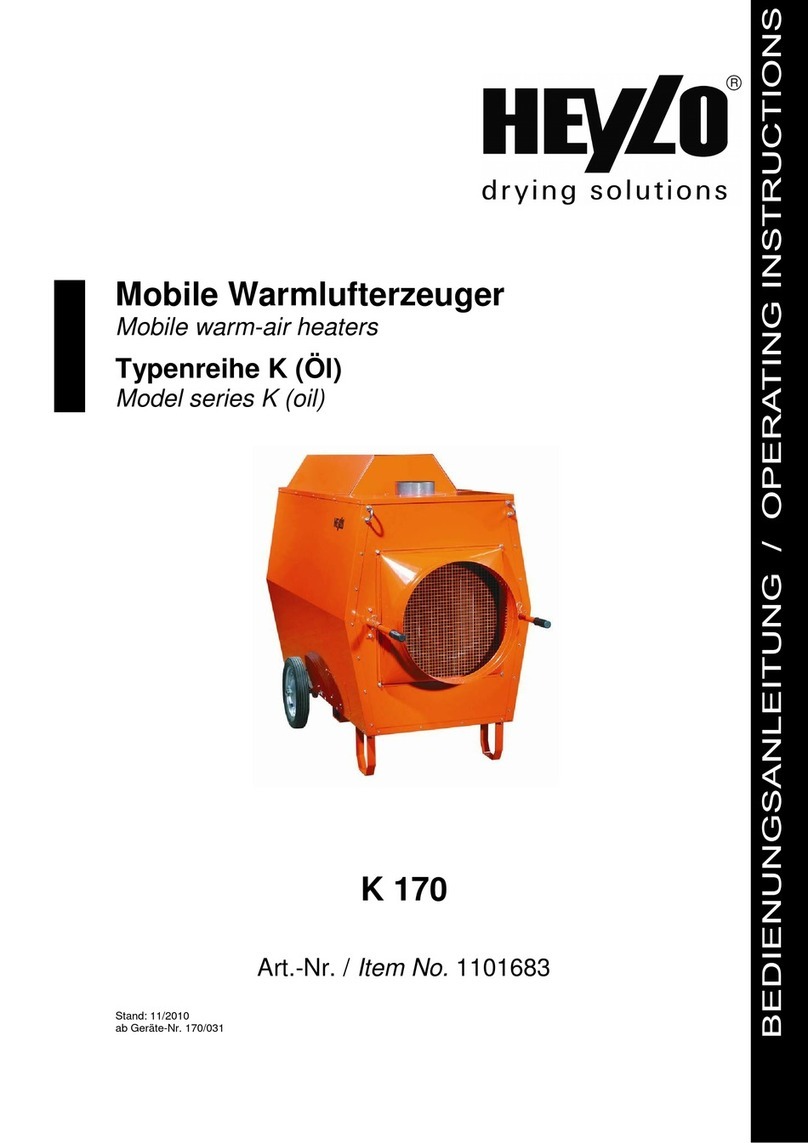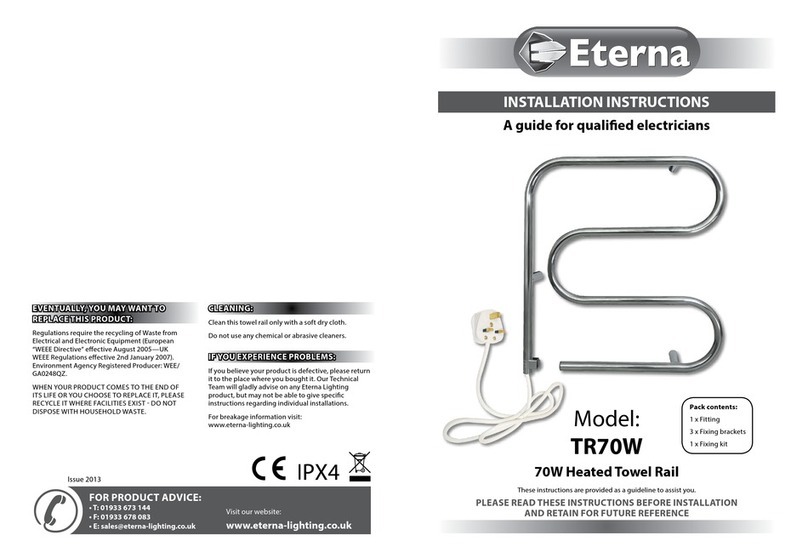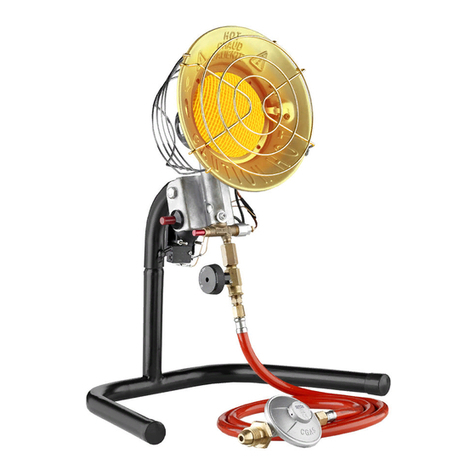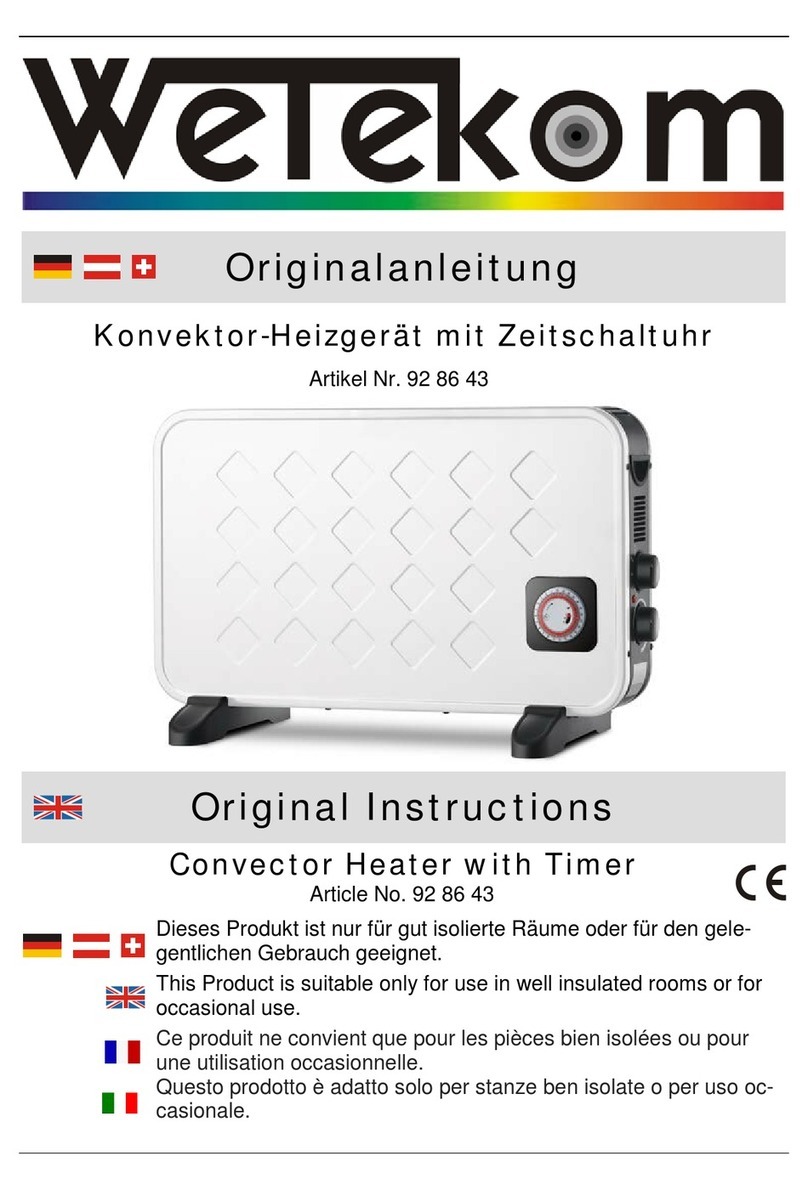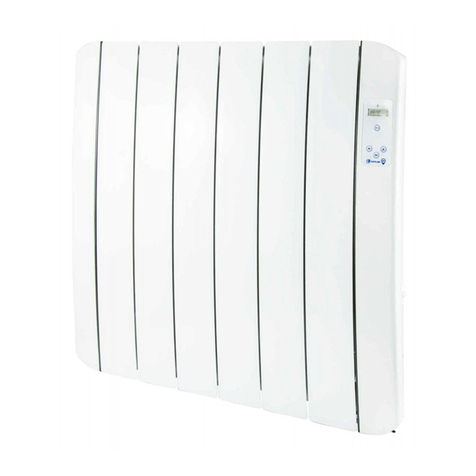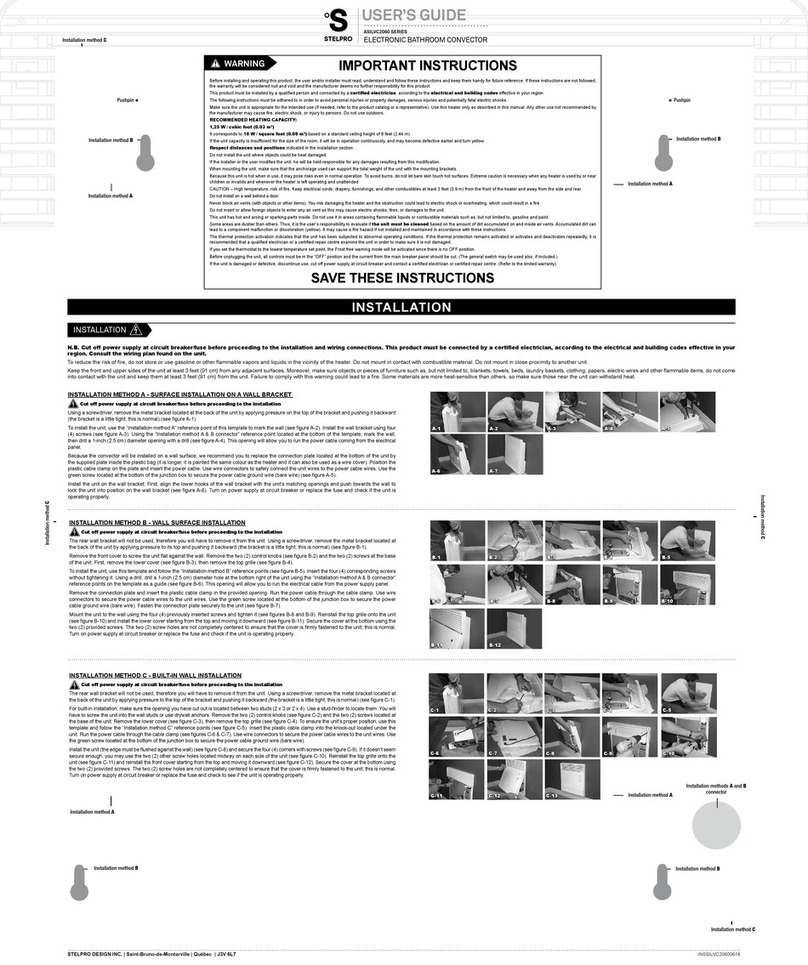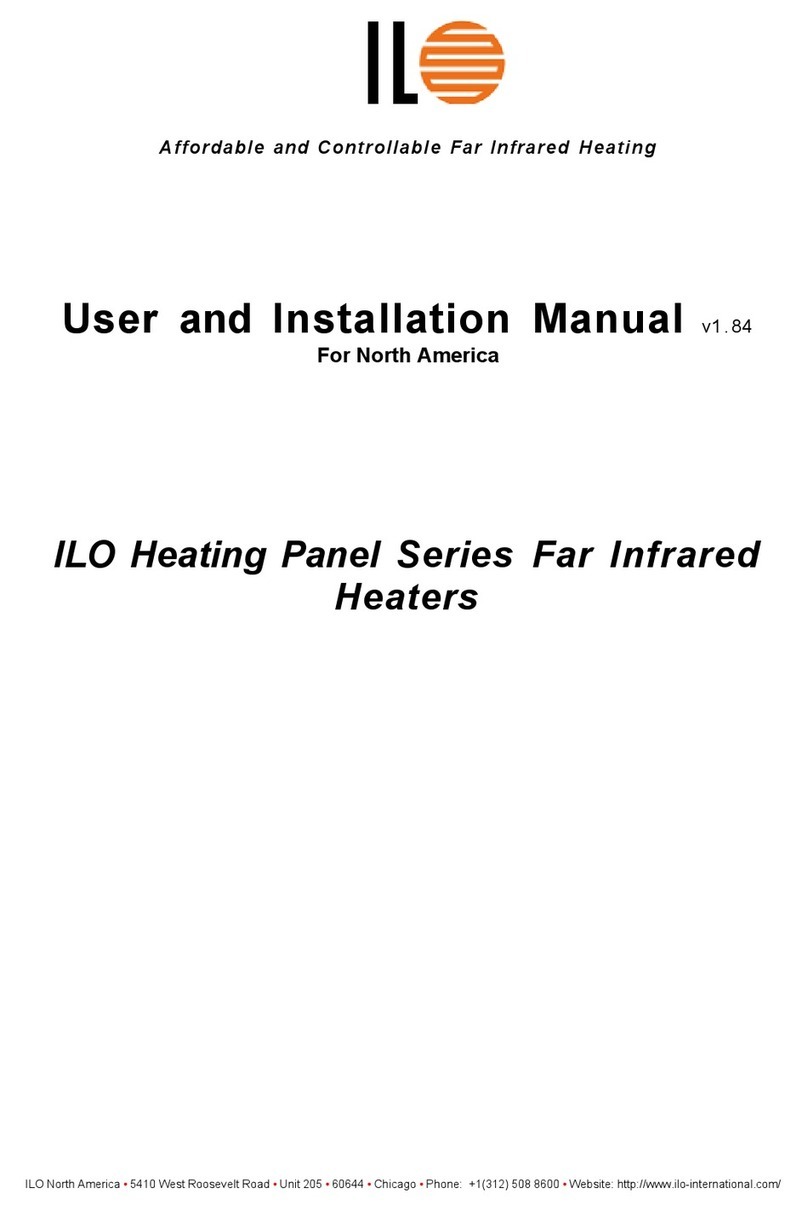
Series AA250 Page 9 LT252 Oct 2019
GENERAL INSTALLATION INSTRUCTIONS
1. Ensure that the heater is level when it is hung or mounted. Obey all clearances to combustibles, listed on
the rating plate on the inside of the front door and on page 8 of this manual.
2. If installed outdoors, the heater must be mounted at least 18 inches (500 mm) off the ground or at a height
to prevent snow blockage of the heater’s air inlet.
3. The heater must be used with the proper gas regulator connected at the gas supply to control the gas
pressure at the inlet within the specified range, listed on the rating plate.
4. The heater’s gas regulator (with pressure relief valve) should be installed outside of building. Any
regulators inside the buildings must be properly vented to the outside. Local, state and national codes
always apply to regulator installation.
5. All gas pressure regulators must be installed in strict accordance with the manufacturer’s safety
instructions. These instructions accompany each regulator.
6. Ensure that all accessories that ship with the heater have been installed. This pertains to air diverters,
hose, regulators, etc.
7. A sediment trap must be installed at the gas inlet. See the section on page 15 for detailed instructions.
8. An accessible and approved manual shut off valve must be connected to the piping system within six feet
(2 m) of the heater.
9. Check all connections for gas leaks. Gas leak testing is performed as follows:
oCheck all pipe connections, hose connections, fittings and adapters upstream of the gas control with
approved gas leak detectors
oIn the event a gas leak is detected, check the components involved for cleanliness and proper
application of pipe compound before further tightening.
oFurther tighten the gas connections as necessary to stop the leak
oAfter all connections are checked and any leaks are stopped, turn on the main burner
oStand clear while the main burner ignites to prevent injury caused from hidden leaks that could cause
flashback.
oWith the main burner in operation, check all connections, hose connections, fittings and joints as well
as the gas control valve inlet and outlet connections with approved gas leak detectors.
oIf a leak is detected, check the components involved for cleanliness in the thread areas and proper
application of pipe compound before further tightening.
oTighten the gas connection as necessary to stop the leak
oIf necessary, replace the parts or components involved if the leak cannot be stopped.
oEnsure all gas leaks have been identified and repaired before proceeding.
10. A qualified service agency must check for proper operating gas pressure upon installation of the heater.
11. Light according to instructions on heater or within owner’s manual
12. It is extremely important to use the proper size and type of gas supply line to assure proper functioning of
the heater. Contact your fuel gas supplier for proper line sizing and installation.
13. This heater can be configured for use with either propane or natural gas. Consult the rating plate, located
on interior of the burner end or motor end door, for the gas configuration of the specific heater.
14. In the case of thermostat failure, a separate back-up control system should be implemented in order to limit
high and low temperatures and activate appropriate alarms, in order to protect livestock.
15. Take time to understand how to operate and maintain the heater by using this Owner’s Manual. Make sure
you know how to shut off the gas supply to the building and also to the individual heater. Contact your fuel
gas supplier if you have any questions.
16. Do not exceed the input rating or burner manifold pressure stated on the rating plate. Use only the orifices
supplied by the manufacturer and specified for the fuel type configuration.








